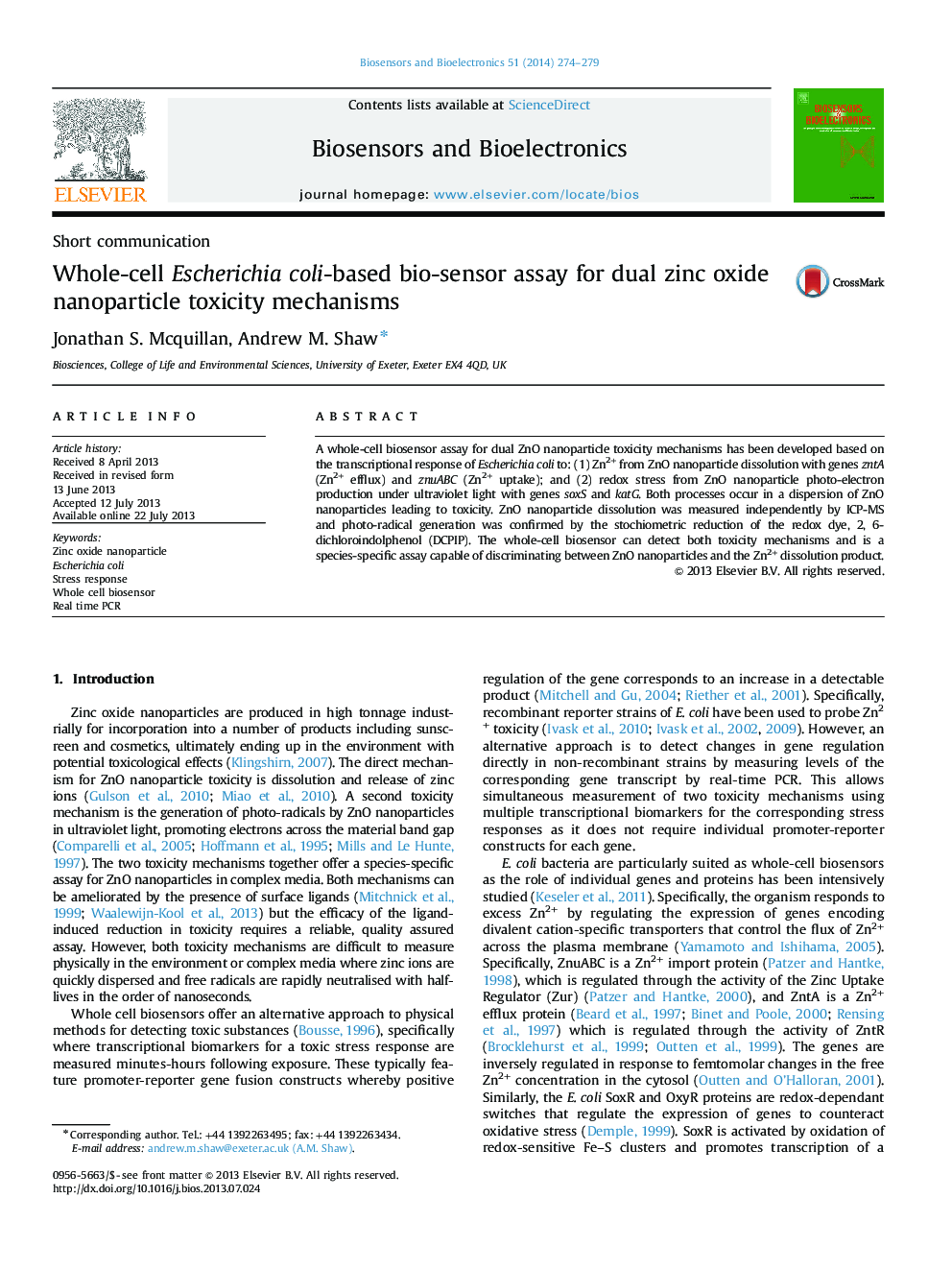| کد مقاله | کد نشریه | سال انتشار | مقاله انگلیسی | نسخه تمام متن |
|---|---|---|---|---|
| 866603 | 1470980 | 2014 | 6 صفحه PDF | دانلود رایگان |

• Two toxicity mechanisms occur at the surface of zinc oxide nanoparticles.
• Zinc oxide nanoparticles dissolve and release toxic zinc ions.
• Zinc oxide nanoparticles produce photo-electrons in ultra violet light generating free radicals.
• Both mechanisms can be detected using physical methods with limitations.
• A whole cell biosensor using E. coli is an accurate and sensitive alternative.
A whole-cell biosensor assay for dual ZnO nanoparticle toxicity mechanisms has been developed based on the transcriptional response of Escherichia coli to: (1) Zn2+ from ZnO nanoparticle dissolution with genes zntA (Zn2+ efflux) and znuABC (Zn2+ uptake); and (2) redox stress from ZnO nanoparticle photo-electron production under ultraviolet light with genes soxS and katG. Both processes occur in a dispersion of ZnO nanoparticles leading to toxicity. ZnO nanoparticle dissolution was measured independently by ICP-MS and photo-radical generation was confirmed by the stochiometric reduction of the redox dye, 2, 6-dichloroindolphenol (DCPIP). The whole-cell biosensor can detect both toxicity mechanisms and is a species-specific assay capable of discriminating between ZnO nanoparticles and the Zn2+ dissolution product.
Journal: Biosensors and Bioelectronics - Volume 51, 15 January 2014, Pages 274–279